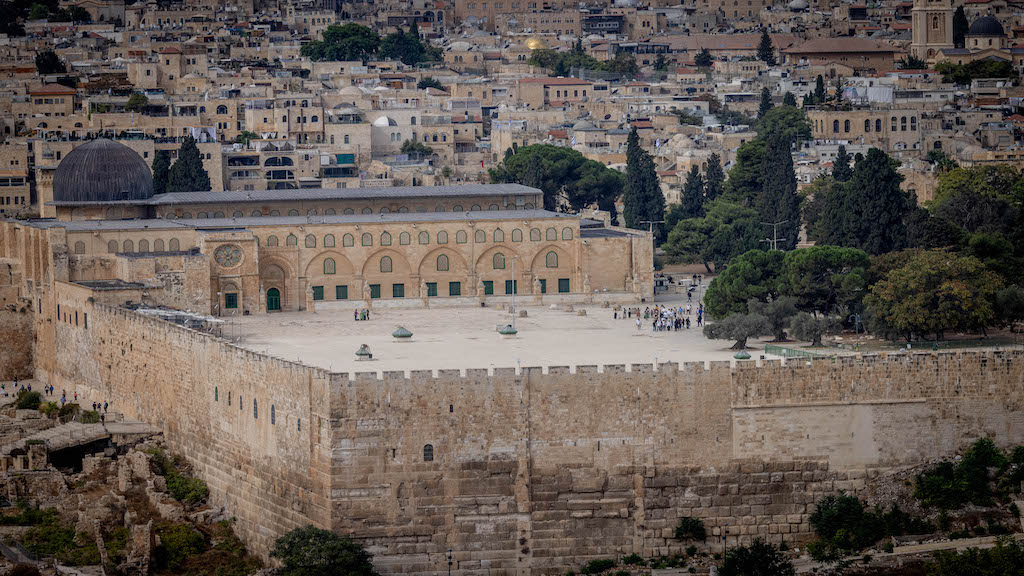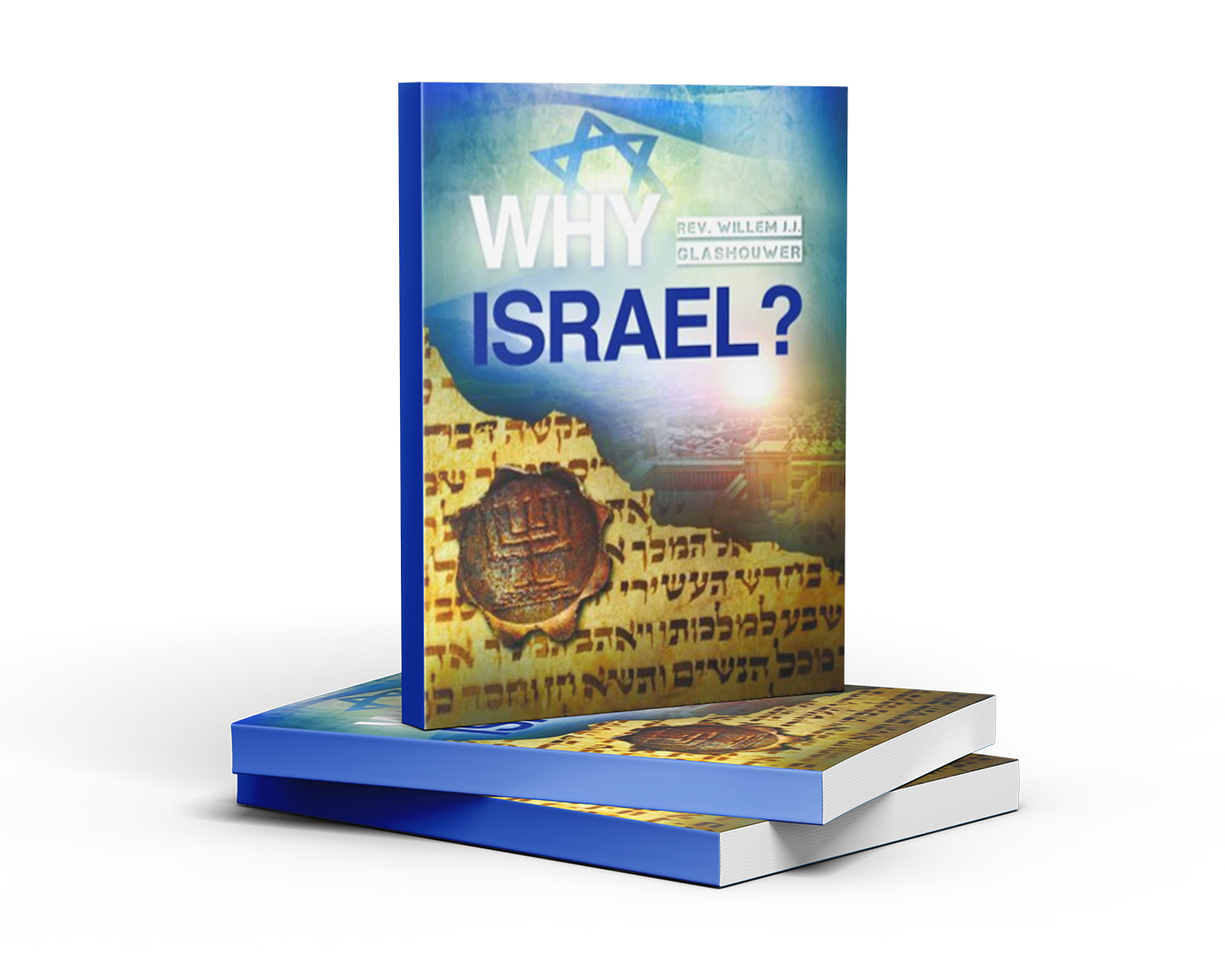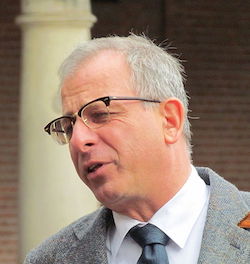The Jewish Temple Mount: Holy Grail for the Nations—Part 2
 The Al Aqsa Mosque on the Temple Mount. | Photo: Flash90
The Al Aqsa Mosque on the Temple Mount. | Photo: Flash90
[Part 2 of 2, read part 1]
The Temple Mount, located in the heart of Israel’s capital Jerusalem, is coveted as a holy grail by the nations, as the prophets foretold, but only revered as holy by the Jewish people. Currently still occupied by Muslims, the Temple Mount has been the ideological and propagandistic focal point of the Islamic war against Jewish return to the land of Israel for almost a century.
References to the Al Aqsa Mosque appear in various ways. When Hamas and Islamic Jihad invaded southern Israel on 7 October 2023 with 6,000 terrorists and carried out a massacre there, they named it ‘Al Aqsa Flood’. The Fatah movement belonging to the Palestine Liberation Movement (PLO) formed a special terror unit during the Second Intifada (September 2000- February 2005) named ‘Al Aqsa Martyrs Brigade’. While Yasser Arafat’s PLO had become Israel’s ‘peace partner’ in 1993 with the signing of the Oslo Accords, it continued to propagate the Islamic doctrine of the necessary and inevitable destruction of the Jewish state in words and actions. During that Second Intifada, Arafat’s Al Aqsa terrorists committed numerous (suicide) bombings against Jewish targets.
Jews ‘storming’ Al Aqsa
Both operational references to the Al Aqsa mosque make it clear that Fatah, Hamas and their allies, including Iran, do not merely intend to expel the Jewish people from the land of Israel by genocidal force. Their central aim is to make it impossible for the Jews to regain sovereignty over the place that legitimises Zionism and is central to Judaism: the Temple Mount.
The mere entering of the Temple Mount by ‘unclean Jews’ is considered an attack on Islam by most Muslims. In 2015, PA/PLO leader Mahmoud Abbas reaffirmed the premise that everything must be done to prevent Jews from ‘defiling the Al Aqsa with their filthy feet’.
This incitement not only ‘legitimised’ numerous, often individually inspired terror attacks, but also intimidated and terrorised peaceful Jews visiting the Temple Mount. Regularly, they are hysterically accused of ‘storming’ Al Aqsa and wanting to destroy the mosque. For years, special Muslim women’s groups were active on the square, spitting on visiting Jews, physically assaulting them and cursing them.
Anchor of Jewish claims
As I pointed out in the first article of this diptych, the Temple Mount is not sacred to Islam at all. However, the site is the irreplaceable religious and historical anchor of Jewish claims to Jerusalem and all of Israel. The culmination of the Jewish return is the rebuilding of the temple on the site now occupied by Islam. Ironically, most Muslims seem more aware of this than most Jews. The anti-Jewish expulsion zeal for instance of Hamas and Fatah, which routinely receives acclaim from the Islamic world but evokes no significant disapproval in the Western world, also applies to the Western Wall, by the way. On several occasions in recent decades, Jewish worshippers near the wall have been assailed by Muslims with stones and other projectiles from Temple Square. The fact that there have been no large numbers of casualties at these instances is a miracle.
Cornerstone third temple
During Sukkot (Feast of Tabernacles) in October 1990, a mass stoning operation led to a massacre at the Temple Mount, where thousands of incited Arab youths turned against not only the Jewish worshippers below at the Western Wall, but also the Israeli police present on the Temple Mount. In the process, 19 Arab rioters were shot dead. The immediate cause of the tragedy was the Jewish action group ‘Faithful of the Temple Mount’, which ceremoniously transported a cornerstone towards the entrance of the Temple Mount. This cornerstone was intended to be used for the third temple that would eventually be built.
Amin al-Husseini
The ‘modern’ Islamic tradition of frequently and violently thwarting Jews at the Western Wall from fulfilling their religious obligations is not new. It escalated as early as August 1929, when the land area of Palestine was under British Mandate rule. Jews praying at the Western Wall had been a thorn in the side of Muslims for much longer even then, and had led to all kinds of harassment and disturbances.
This included regularly driving donkeys and camels through (at that time) the alley near the Western Wall, forcing Jews to step aside and polluting the pavement. In 1925, British authorities were prompted by Muslim leaders to forcibly remove chairs and benches. And on Yom Kippur 1928, the British forcibly removed a fabric partition between the men’s and women’s sections. On 20 October 1928, praying Jews near the wall were attacked by an Arab mob, during which the British did not intervene. The same happened on 14 August 1929, when the Torah scrolls brought by Jews were set on fire. The outbreak of violence was a result of incitement by notorious anti- Jewish agitator Amin al-Husseini (an uncle of the later PLO leader Yasser Arafat). He had spread the rumour that the Jews wanted to destroy Al Aqsa Mosque, and that the Western Wall was part of the mosque. The disturbances spread across the country and claimed the lives of 133 Jews. The theme introduced by Al-Husseini is used by Muslims to this very day to legitimise anti-Jewish violence.
“May it be Your will, Adonai, our God, and the God of our Fathers that the Holy Temple be rebuilt speedily in our days, and grant us our share in Your Torah. And there we will serve You reverently as in the days of old, and in earlier years. And let Adonai be pleased with the offerings of Judah and Jerusalem as in the days of old and in earlier years.”
From the Eighteen Benediction, part of the daily Jewish prayer cycle.
Why Israel? by Rev. Willem Glashouwer
Order the book

